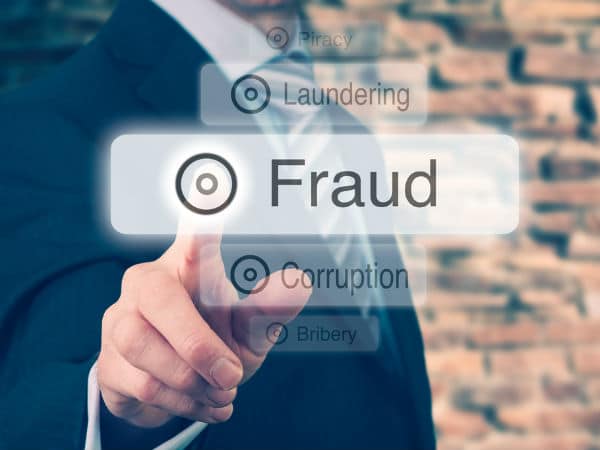How to Avoid Chargeback Hell – Fraud in Your Site

It’s a fact. On-line merchants are being scammed everyday out of their hard earned money. Surprisingly, the internet is full of advice for customers to avoid being scammed by on-line retailers and action sites. Precious little is found for the other side of the transaction. But it’s no secret. Here’s how it usually works.
You have a customer who buys a product or service on your website. The sale passes all your fraud filters: the address matches the AVS (Address Verification System) and the CVV security code also matches. The card transaction is successful. Are you home free?
Not by a long shot. I have been scammed several times and I’ve learned a little more each time. During this period, I’ve asked questions of credit card fraud personnel, retail and wholesale merchants and police. I’ve learned some valuable lessons the hard way. While you can’t cut all risk from these “blind” transactions, you can reduce your vulnerabilities. And in the end, it’s up to you as a merchant to safeguard your income from these scam artists.
To be fair, certain circumstances do warrant a credit card chargeback. There are dishonest merchants who mislead in their advertisements and some are downright frauds who “take the money and run.” And misunderstandings do occur between buyer and seller that cannot be reconciled. Perhaps the buyer claims he or she did not receive the item even though you have proof of delivery. What then? We’ll write more on this later.
Briefly, here are some common red flags that may indicate fraud or at least the possibility of an eventual chargeback.
1. A shipping address that’s different from a billing address. Some are legitimate so you can’t cross these off your list entirely. But these transactions warrant further investigation.
2. A large order well outside your usual order. And if the buyer waits a week or two and orders big again, you may have two very big problems. When the stolen card holder discovers the fraud and charges back, you’ll lose very big. Remember, credit card processors will take their money back from you first and ask questions later.
3. A buyer who needs that large order quickly, usually overnight. That’s quite expensive, you say? The buyer won’t care about cost if he has no intention of paying anyway.
4. A customer who asks about your return policy. Sound strange? It’s not. This customer has “returns” on the mind even before receiving the merchandise. The odds are this transaction will come back to haunt you. If you question the customer, bam! CHARGEBACK!
What to do? There is no way to make your business absolutely scam proof. Identity theft artists have become quite sophisticated in their evil ways. Here are the extra steps I’ve taken. Perhaps you can incorporate some in your own anti-scamming procedure.
- Make sure all the pertinent risk controls are turned on at your merchant processor’s administration panel. The main controls to turn on are AVS and CVV (3 or 4 digit security code). International orders are riskier than US orders and you have little to no recourse disputing a chargeback from a foreign customer. You can turn off “international” with most card processors.
- Sign up for an on-line e-mail, name/address, and phone look-up service. Yes, some information you can get free but you’ll have to pay for more detailed information. It’s a worthy investment. These databases aren’t foolproof, but it will help put your mind at ease if everything checks out.
- Call the customer if you are suspicious. You’ll quickly see if this is a spam phone number. You can set your own dollar threshold on whom to call. Decide what you can afford to lose. Verify all order details, especially the credit card billing information.
- Spell out your return policy on your website in clear language. Often times it’s wiser to process the return or exchange no matter when it happens because the customer can chargeback the order and put you through the ringer. It’s your call.
- For large suspicious orders, I ask the customer to send a money order or cashier’s check. I present it as part of our online store policy for large orders. You may lose the sale but it’s better than losing it in a chargeback. Your credit card processor charges extra for chargebacks. They can suspend your account or raise your rates if they see too many chargebacks.
- If you accept PayPal, a shipment to a verified address (part of the seller protection) can give you some peace of mind.
- For at-risk orders, send your order through UPS or Fed Ex and ask for a signature. It costs you more and, yes, the customer is rarely home during delivery times. But if notified, the buyer usually will make arrangements if they know which day the package is expected to arrive. At the worst, after several attempts the package will be sent back to the post office for pick-up. Merchant card processors may decide in your favor if the customer claims non-receipt of the merchandise and you can prove not only delivery but an accepting signature too.
If you don’t require a signature, the customer can claim that they simply never received the package. Implied is that a thief could steal the package from a doorway or porch. It may be enough reason for you to lose the chargeback case, especially in a high dollar transaction.
It’s an unfortunate fact that honest merchants sometimes must pay for the crimes of others. At present no party has the where-with-all to investigate every illegitimate credit card transaction. So it’s up to you to protect yourself every way you can.
Merchants deserve a “bill of rights” because they have very few rights at present. It should comprise the following:
Merchant card processors have a vested interest in deciding against you. They take money from your account to cover the shortage, add on chargeback fee, end of story. There is nothing you can do.
- In a new bill of rights, money shall not be debited from the merchant’s business checking account until a fair hearing from both sides. The deciders shall not be composed of any employee or executive of the credit card processor in question nor by any person connected with the merchant.
- Buyers have up to 90 days from purchase to file a chargeback claim. That is plenty of time to file a claim. During this period, the merchant’s finances remain in limbo.
- From the time of a claim, the buyer and seller have 30 days in which to submit the pertinent information. If either side does not submit information in that time, he or she forfeits the case. The case must be decided within 15 days after the document deadline.

